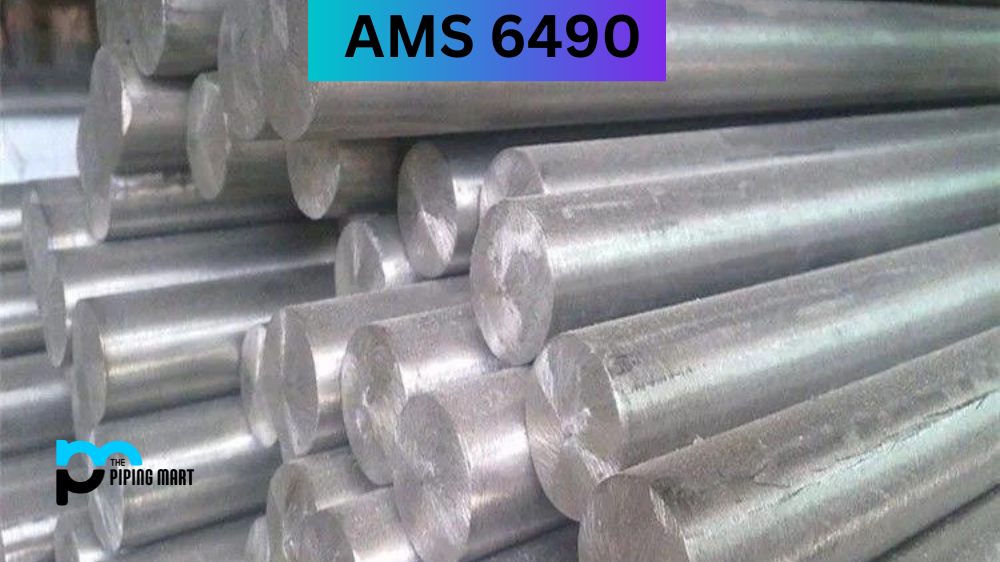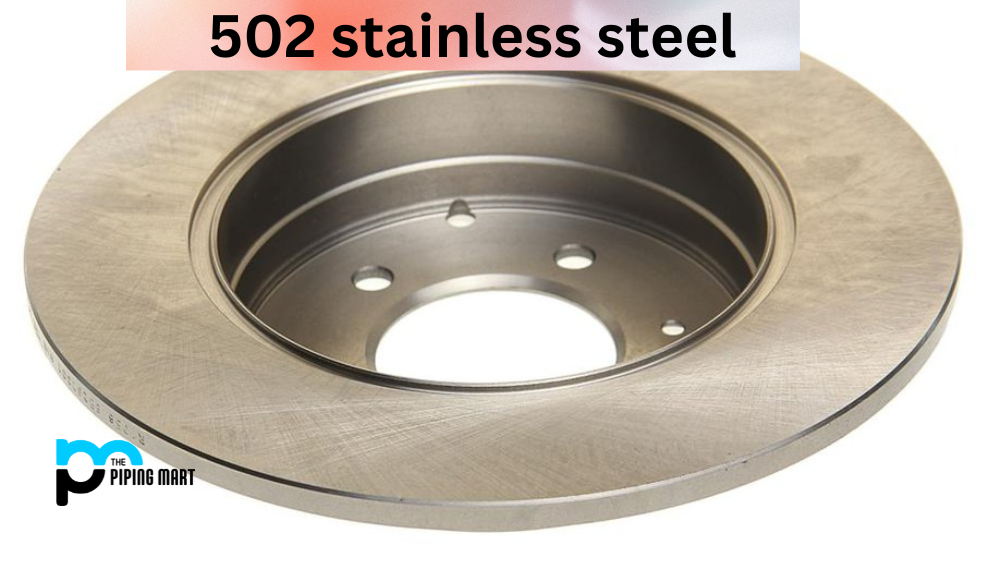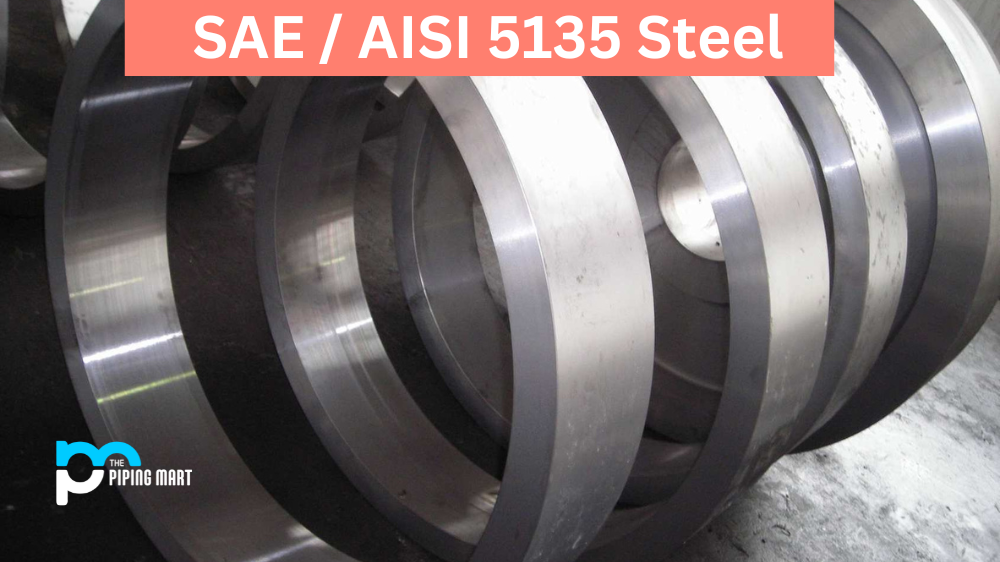AISI 5046 steel is a medium-carbon alloy steel that has excellent corrosion and heat resistance. UNS G50460 is also very strong, making it ideal for use in a variety of engineering applications. SAE/AISI 5046 Alloy Steel, also known as UNS G50460, is a low-alloy steel with excellent toughness and wear and tear resistance. This steel’s chemical composition consists of carbon, manganese, nickel, chromium, and molybdenum, all of which play critical roles in the alloy’s overall properties and performance. The AISI 5046 Alloy Steel is notable for its remarkable tensile strength, durability, and corrosion resistance, making it a popular choice in various industries, including aerospace, automotive, and engineering. Its versatility has made it an essential material for developing high-stress components, such as gears, axles, and other heavy machinery parts. Its unique combination of properties makes it an excellent alloy for applications that require a strong, reliable, and durable material. This article will provide an overview of the properties and uses of 5046 Alloy Steel and discuss its corrosion resistance, heat resistance, heat treatment, machining, and welding capabilities.
What Forms of AISI 5046 is Available at Piping Mart?
- Nut
- Bar
- Bolt
- Pipe
- Screw
- Tubing
- Valves
- Washers
- Flanges
- Fasteners
- Electrodes
- Stud Bolts
- Sheet Plates
- Pipe Fittings
- Forged Fitting
- Instrumentation Fittings
AISI 5046 Chemical Composition
| Element | Content (%) |
|---|---|
| Iron, Fe | 97.775 – 98.47 |
| Manganese, Mn | 0.750 – 1.00 |
| Carbon, C | 0.430 – 0.500 |
| Chromium, Cr | 0.200 – 0.350 |
| Silicon, Si | 0.150 – 0.300 |
| Sulfur, S | ≤ 0.0400 |
| Phosphorous, P | ≤ 0.0350 |
AISI 5046 Physical Properties
| Properties | Metric | Imperial |
|---|---|---|
| Density | 7.85 g/cm3 | 0.284 lb/in³ |
AISI 5046 Mechanical Properties
| Properties | Metric | Imperial |
|---|---|---|
| Bulk modulus (typical for steel) | 140 GPa | 20300 ksi |
| Shear modulus (typical for steel) | 80 GPa | 11600 ksi |
| Elastic modulus | 190-210 GPa | 27557-30458 ksi |
| Poisson’s ratio | 0.27-0.30 | 0.27-0.30 |
| Hardness, Brinell (annealed and cold drawn) | 174 – 223 | 174 – 223 |
| Hardness, Knoop (converted from Brinell hardness) | 221 | 221 |
| Hardness, Rockwell B (converted from Brinell hardness) | 92 | 92 |
| Hardness, Rockwell C (converted from Brinell hardness. Value below normal HRC range, for comparison purposes only) | 13 | 13 |
| Hardness, Vickers (converted from Brinell hardness) | 208 | 208 |
| Machinability (annealed and cold drawn. Based on 100 machinability for AISI 1212 steel) | 60 | 60 |
AISI 5046 Thermal Properties
| Properties | Metric | Imperial |
|---|---|---|
| Thermal conductivity (typical steel) | 46.6 W/mK | 323 BTU in/hr.ft².°F |
AISI 5046 Equivalent
- ASTM A519
- SAE J404
- SAE J412
- SAE J770
AISI 5046 Uses
SAE/AISI 5046 steel is often used in automotive components, agricultural machinery components, and other industrial or mechanical components. This strong alloy can also be found in construction equipment such as bulldozers, mining machinery parts, and power plant components. Due to its increased strength and wear resistance compared to other steels of similar composition, SAE/AISI 5046 is often used to create parts with high load-bearing capacity.
AISI 5046 Uses in Industries
Automotive Industry
AISI 5046 is commonly used in the automotive industry for its high strength and wear resistance properties. It is often used in components such as gears, shafts, and bearings, where durability and reliability are crucial. The steel’s ability to withstand high stress and impact makes it a popular choice for heavy-duty vehicles like trucks and construction equipment.
Aerospace Industry
The aerospace industry also utilizes AISI 5046 due to its high strength-to-weight ratio and resistance to fatigue. This steel is commonly used in aircraft landing gear components, engine parts, and structural elements. Its ability to withstand extreme temperatures and harsh environments makes it a reliable material for aerospace applications.
Oil and Gas Industry
AISI 5046 is widely used in the oil and gas industry for its corrosion resistance properties. This steel can withstand exposure to corrosive substances like saltwater, making it ideal for offshore drilling platforms, pipelines, and other equipment used to extract oil and gas. Its high strength also allows it to handle the weight of heavy drilling machinery.
Construction Industry
In the construction industry, AISI 5046 is commonly used for reinforcing bars in concrete structures due to its high tensile strength. It is also utilized in bridge construction, where its durability and toughness are essential for withstanding heavy loads and extreme weather conditions.
Manufacturing Industry
Due to its versatility and cost-effectiveness, the manufacturing industry relies on AISI 5046 for various applications. This steel is often used in machine parts, tools, molds, and other components that require high strength and wear resistance. Its machinability also makes it an ideal material for producing complex shapes.
AISI 5046 Corrosion Resistance
SAE/AISI 5046 steel offers good corrosion resistance due to its high chromium content. Chromium helps form a protective layer on the surface of the metal that prevents oxidation from occurring. The chromium also helps protect against wear and tear from environmental elements such as rain and dust particles. As a result, it is an ideal choice for outdoor applications where protection from corrosion is necessary.
AISI 5046 Heat Resistance
SAE/AISI 5046 has an impressive heat-resistant capability due to its high carbon content—the higher the carbon content, the higher the heat-resistant properties become. It can withstand temperatures up to 600 degrees Celsius without any major degradation in material properties or performance characteristics. This makes it suitable for use in applications where extreme temperatures are encountered regularly.
AISI 5046 Heat Treatment
When it comes to heat treating this alloy steel type, there are several options available depending on what you need the finished product to do—normalizing (which increases hardness), hardening (which increases strength), annealing (which relaxes stresses), tempering (which softens brittle materials), or quenching (which increases toughness). Depending on your application needs, one or more treatments may be necessary for optimal performance.
AISI 5046 Machining
Machining operations such as drilling, turning, milling, and tapping can all be done with this particular type of steel with ease due to its good machinability rating when compared with other metals like aluminum or stainless steel alloys. It should be noted that this metal does have a tendency towards chip welding during certain operations due to its high carbon content, which may require additional coolant during operation or tool-changing procedures if chip welding becomes an issue during machining operations.
AISI 5046 Welding
Welding operations can also be performed using this type of metal with relative ease using either MIG or TIG welders depending on what kind of welds you need to be made on your project pieces—it has good weldability ratings overall when compared with other metals like brass or copper alloys making it easy to work with while still maintaining good structural integrity after welding operations have been completed successfully.
Conclusion:
In conclusion, SAE/AISI 5046 is an excellent choice for those looking for a versatile medium-carbon alloy steel thanks to its impressive corrosion resistance capabilities combined with its strengthened heat resistant properties, which make it perfect for use in various engineering projects needing multiple treatments due to their varying application requirements throughout their life cycle. With good machinability ratings combined with great weldability ratings overall, this type of metal is definitely worth considering when looking into different types of metal available for use within any given project requiring extreme levels of strength combined with corrosion protection throughout their life cycle. With proper care taken during fabrication processes, such as preheating before welding starts along with post-weld cooling times set appropriately, this type of metal can easily last through years, even decades worth” of use without any significant signs degrading over time, thus making it one worthy investment piece especially if longevity & long term performance is taken into account when selecting appropriate materials for fabrication usage within any given project requirement specification thus ensuring quality results every time!

Pipingmart is a B2B portal that specializes in metal, industrial and piping items. Additionally, we share the latest information and information about materials, products and various types of grades to assist businesses that are involved in this business.




